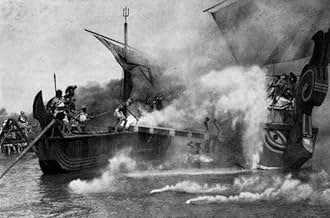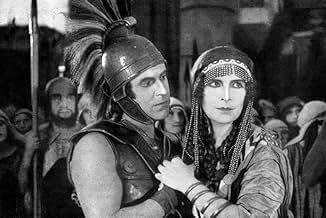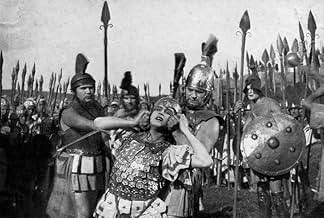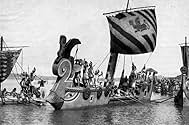Paris vole la belle Hélène à son mari. Les amoureux se réfugient à Troie, et la guerre éclate.Paris vole la belle Hélène à son mari. Les amoureux se réfugient à Troie, et la guerre éclate.Paris vole la belle Hélène à son mari. Les amoureux se réfugient à Troie, et la guerre éclate.
Friedrich Ulmer
- Menelaos
- (as Fritz Ulmer)
Karel Lamac
- Patroklos
- (as Carl Lamac)
Rudolf Meinhard-Jünger
- Tersites
- (as Rudolph Meinhard)
Histoire
Le saviez-vous
- AnecdotesFor many years the film was considered partially lost until it was reconstructed from a version found in Swiss archives.
- ConnexionsEdited into Spisok korabley (2008)
Commentaire à la une
I saw a recently restored copy at the Cinematheque Suisse at the Cassino de Montbenon, Lausanne, VD, CH. It was a unique session, with a live pianist and some explanations about the history of the movie and its restauration before.
It is a tour de force of 3h20... even with breaks, the occasional involuntarily comical scene, live music and lots of interest, it is tiresome. The Sturm-und-Drag style is heavy, many theatrical conventions of the time don't hold anymore to the point of eliciting laughters from the audience; people are far shorter than in today's movies, and the standards of beauty have changed so much it is difficult to believe.
On the other hand, it is a unique experience of an early superproduction. The take on the famous historical and mythical Homer poem is detailed and enlightening, and thinking about the historical context (as people knew far more mythology during the 1,920s than today) can make the movie more enjoyable. Also some historical knowledge about the 1,920s can help, for example about the role of physioculture in Germany at the time.
It is extremely rare that such a movie will be at the nearest Blockbuster anytime soon. But in case it does, and you have a serious interest in German Sturm-und-Drag, go for it.
It is a tour de force of 3h20... even with breaks, the occasional involuntarily comical scene, live music and lots of interest, it is tiresome. The Sturm-und-Drag style is heavy, many theatrical conventions of the time don't hold anymore to the point of eliciting laughters from the audience; people are far shorter than in today's movies, and the standards of beauty have changed so much it is difficult to believe.
On the other hand, it is a unique experience of an early superproduction. The take on the famous historical and mythical Homer poem is detailed and enlightening, and thinking about the historical context (as people knew far more mythology during the 1,920s than today) can make the movie more enjoyable. Also some historical knowledge about the 1,920s can help, for example about the role of physioculture in Germany at the time.
It is extremely rare that such a movie will be at the nearest Blockbuster anytime soon. But in case it does, and you have a serious interest in German Sturm-und-Drag, go for it.
Meilleurs choix
Connectez-vous pour évaluer et suivre la liste de favoris afin de recevoir des recommandations personnalisées
Détails
- Durée3 heures 24 minutes
- Couleur
- Mixage
- Rapport de forme
- 1.33 : 1
Contribuer à cette page
Suggérer une modification ou ajouter du contenu manquant

Lacune principale
By what name was Hélène de Troie (1924) officially released in Canada in English?
Répondre































